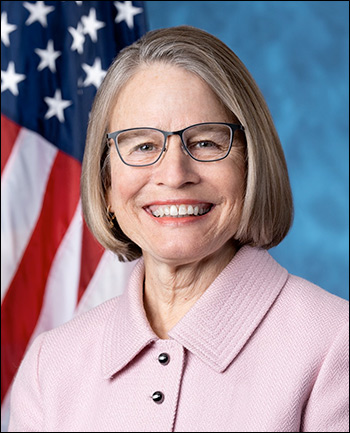
Vice President Kamala Harris: a tough path to winning in November. (Photo by Gage Skidmore)
By Jim Ellis — Tuesday, July 23, 2024
President
While Vice President Kamala Harris is well positioned to replace President Joe Biden as the 2024 Democratic presidential nominee, her task of winning the general election is anything but easy. New polls in the key swing states start her in an underdog position in virtually every key place that will determine the final outcome.
As we know, there are six states considered prime swing states: Arizona, Georgia, Michigan, Nevada, Pennsylvania, and Wisconsin. Before Biden announced his exit, another half-dozen surprising domains were showing competitive signs: Maine, Minnesota, New Hampshire, New Jersey, New Mexico, and Virginia. This means that former President Donald Trump was either leading in the most recent state survey or within a point or two of moving ahead. It remains to be seen if any of these second-tier swing states truly become competitive in a Trump-Harris race.
July polling in eight of these states illustrates the Harris difficulty factor in overcoming Trump’s current advantage. None of the states are out of play, since the Trump leads are all in single digits, but the fact that she would have to simultaneously hold nine of 12 domains increases the difficulty factor.
Vice President Harris’ biggest problem is that three of the states, Arizona, Georgia, and Nevada, appear locked for Trump. We have seen 26 publicly released polls from Arizona since January 1, and Trump leads in all. The Public Policy Polling organization conducted a Grand Canyon State survey during the July 19-20 period (736 registered Arizona voters), and Trump holds a six-point, 46-40 percent, advantage against Harris.
In Georgia, 24 Trump-Biden polls were conducted in 2024, and as in Arizona, Trump leads all. Two Trump-Harris polls have been conducted in July. The University of Georgia for the Atlanta Journal-Constitution newspaper (July 9-18; 1,000 likely Georgia voters) finds Trump holding a five-point edge over VP Harris. Insider Advantage (July 15-16; 800 likely Georgia voters) projects an even larger 10-point lead.
Nevada is turning in similar numbers. In 2024, a total of 22 Trump-Biden polls have been released, and Trump led in 21 with one tie. Insider Advantage conducted the most recent Trump-Harris poll (July 15-16; 800 likely Nevada voters) and Trump holds a 10-point, 50-40 percent, margin over the vice president.
These three states are significant because the data suggests that they are solid for Trump. Should he carry through and win them all, the former president would add 33 electoral votes to his 2020 national total, meaning he would be literally just one state away from winning the national election.
This is what makes Harris’s path difficult. Her margin of error if conceding Arizona, Georgia, and Nevada is just one state.
Therefore, looking at the remaining top-tier swings of Michigan, Pennsylvania, and Wisconsin, Harris would have to sweep them.
Today, she trails Trump in Michigan by five percentage points according to Democratic pollster Public Policy Polling (July 17-18; 650 registered Michigan voters)
The latest Pennsylvania numbers tell a similar tale. SoCal Research (July 20-21; 500 likely Pennsylvania voters) yields Trump a 50-46 percent edge over Harris.
In Wisconsin, Harris fares a bit better, but still could easily lose. The Civiqs research organization, polling for Daily Kos Elections (July 13-16; 514 registered Wisconsin voters), sees Trump and Harris deadlocked at 48 percent apiece.
There is some current data appearing from the second tier, though no July polling has been released for Maine, Minnesota, New Jersey, and New Mexico.
In New Hampshire, a state the former president twice lost to Hillary Clinton and President Biden, a group called Praecones Analytica just tested the electorate (July 19-21; 601 registered New Hampshire voters) and shows Trump holding a one-point, 40-39 percent, edge over VP Harris.
Finally, Florida Atlantic University tested the Virginia electorate with a released small sample survey (July 14-15; 301 registered Virginia voters) and projects Trump with a 41-40 percent lead over Harris.
As you can see, the point deficit in any of the nine first- and second-tier swing and potentially competitive states is not insurmountable in any instance. The vice president’s problem is that she must win all of these swing states, assuming Arizona, Georgia, and Nevada continue their year-long trend of favoring former President Trump. Therefore, of the remaining targets, Vice President Harris must run the table if she is to claim the White House since her margin of error is virtually depleted.






